What is an Introduction to User-Friendly Website Design?

In today’s highly competitive digital world, merely having a website is not enough for an online presence.
Your website should be a powerful tool for attracting customers, providing information, and creating a pleasant and unique experience.
This is where the concept of #UserFriendlyWebsiteDesign reaches its peak importance.
User-friendly website design goes beyond visual aesthetics; this concept includes ease of use, accessibility, high efficiency, and creating a pleasant feeling for the user when interacting with the website.
A poorly designed website can lead to user confusion, quick abandonment of the site (increased bounce rate), reduced conversion rates, and ultimately, the loss of countless business opportunities.
The main goal of this type of design is to accurately respond to the users’ hidden and overt needs and expectations so that they can easily and without any obstacles access the desired information, complete forms, communicate with services, or make their purchases with confidence.
This chapter provides a comprehensive and fundamental explanation of the importance and deep meaning of user-friendly web design.
From an educational perspective, we show you why a complete understanding of these principles is crucial not only for designers and developers but also for any business seeking sustainable success in the online space.
User-friendly website design directly impacts customer satisfaction and loyalty.
A well-designed website encourages users to spend more time on it, view more pages, and return to it, which significantly increases the chance of converting a simple visitor into a loyal and lasting customer.
Furthermore, a positive user experience can lead to positive word-of-mouth advertising, which is one of the strongest and most effective marketing methods.
Suppose a user has an extraordinary experience on your site; they will likely recommend it to their friends and acquaintances.
In fact, user-friendly website design is the backbone of your online success.
Without it, even the best products, most attractive services, or most innovative ideas might get lost amidst a flood of digital information and and never be properly seen.
Investing in improving user experience is not just an expense, but a strategic investment for the future of your business that will yield significant returns and pave the way for sustainable growth and development.
Does your current website build the trust that potential customers should have in your business? If the answer is no, it’s time to get your professional and influential corporate website with Rasawb.
✅ Fully customized design tailored to your brand identity
✅ Increased lead generation and business credibility in the eyes of customers⚡ Contact us for a free consultation!
Fundamental Principles of User-Friendly Design and the Role of User Experience
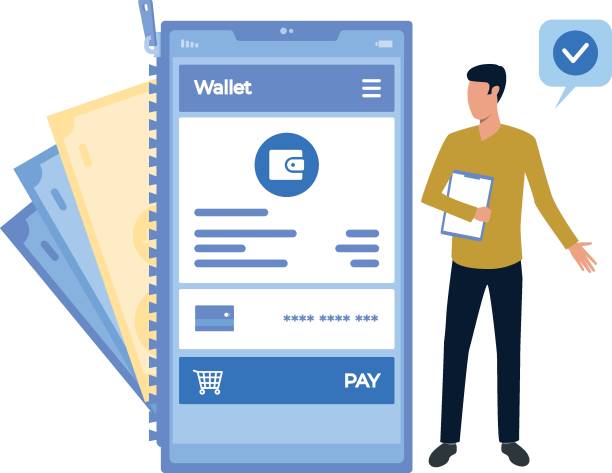
User-friendly website design is based on a set of fundamental principles aimed at creating a desirable and unique user experience (UX).
These principles include usability, #Accessibility, #Transparency, #Consistency, and #Efficiency.
Usability means that the website should be easy to use and users should be able to achieve their goals easily and without needing special training.
Accessibility means that the website should be usable for all users, including those with special needs (such as visual or hearing impairments, or those using assistive technologies).
Transparency in design helps users understand what is happening, what different options do, and what to expect from their interactions, while consistency in layout and functionality makes the website predictable and reliable, giving users a sense of security and control.
This chapter provides an in-depth analysis of these principles and serves as a comprehensive guide for web developers and designers to create a solid framework for their designs.
For example, visual design should be simple, uncluttered, and visually organized so that users can easily find and focus on the main content.
Visual and textual feedback are also very important for guiding users throughout the process; if a user clicks a button, they should receive feedback (such as a button color change, a confirmation message, or a loading icon) indicating whether the operation was successful or an error occurred.
The main goal of user-friendly website design is not only to meet user needs but also to go beyond that and create a pleasant and memorable experience for them.
These principles help ensure that a website is not only functional and efficient but also conveys a good feeling to the user, ultimately leading to increased engagement, loyalty, and conversion rates.
The importance of user experience in this area is such that many successful companies worldwide have placed UX at the heart of their digital strategies and make significant investments in this sector.
Ignoring these principles can mean losing competitiveness and market share.
The Difference Between User Interface and User Experience Table
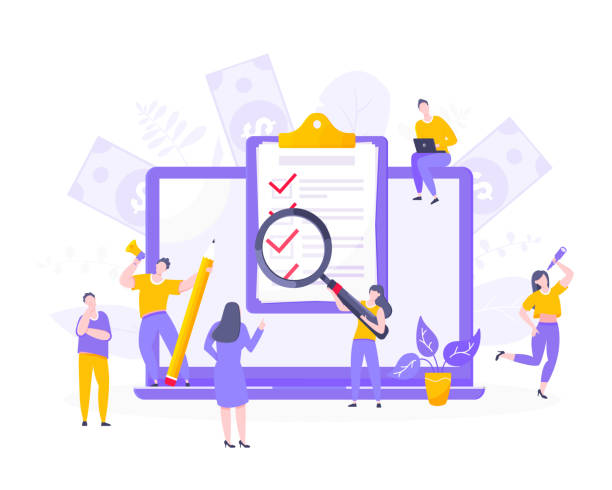
In the world of user-friendly website design, there are two main concepts, User Interface (UI) and User Experience (UX), which are often confused with each other but have fundamental differences while being complementary.
Understanding this distinction is vital for anyone working in web design and development, or even for business owners who want their website to succeed.
#UserInterface addresses the #Appearance, #Feel, and #VisualInteractions of a website or application; meaning everything the user sees and interacts with, including buttons, icons, fonts, colors, images, animations, and the overall page layout.
The goal of UI is for the website to be visually appealing, beautiful, and interactive, guiding the user towards interaction with elements.
This section provides a specialized and detailed explanation of these distinctions to clarify any ambiguities.
User Experience (UX), however, goes beyond appearance and addresses the user’s overall feeling when using a product or website.
This includes the user’s emotions, attitudes, perceptions, and reactions before, during, and after using the website.
UX answers the question of whether the website is useful, usable, efficient, and enjoyable for the user.
Good UX ensures that the user achieves their goal easily, without confusion, and with minimal effort, feeling satisfied with the process.
For example, if the purchasing process in an online store is complex and lengthy, even if its user interface is beautiful, it will result in a poor user experience.
To clarify these differences and better understand the role of each in user-friendly design, see the table below.
This table helps you gain a better understanding of the role of each in creating a successful and sustainable website and appreciate the synergy of both.
A strong UI design without appropriate UX might create a beautiful but completely unusable and frustrating website, and conversely, excellent UX with poor UI might never attract users.
| Feature | User Interface (UI) | User Experience (UX) |
|---|---|---|
| Primary Focus | Visual appearance and interactive elements (How it looks) | User’s feelings and experience during use (How it feels) |
| Key Elements | Colors, fonts, buttons, icons, images, layout | Usability, accessibility, information architecture, user research, user flow |
| Ultimate Goal | Aesthetics, attractiveness, and ease of visual interaction | Solving user problems, creating satisfaction and loyalty |
| Main Question Posed | Is this product beautiful and appealing? Are the buttons clickable? | Can the user easily perform their task? Is it useful? |
| Key Stages in the Process | Visual design, interaction design, prototyping, implementation | User research, wireframing, user journey mapping, usability testing |
Ultimately, successful user-friendly website design is always the result of close and harmonious collaboration between UI and UX.
An attractive user interface can draw a user in at first glance, but only an excellent user experience keeps them, helps them achieve their goal, and ultimately converts them into a loyal customer.
Neither can reach its full potential without the other.
The Importance of Visual Navigation and User-Friendly Search
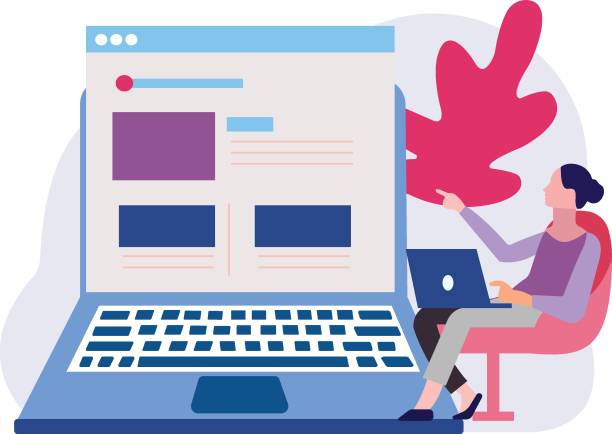
Navigation on a website acts like a roadmap for users and is one of the most important factors in user-friendly website design.
A #clear, #consistent, #visual, and #intuitive navigation system allows users to quickly access the information they need without confusion.
The design of the main menu, internal links, and breadcrumbs all play a role in creating a smooth and frictionless navigation experience.
This chapter provides a comprehensive educational and practical guide to optimizing this vital aspect of web design.
Navigation design should be such that even first-time visitors can easily find their way around your site.
For example, menu placement should be consistent and predictable (typically at the top, left, or as a hamburger menu for mobile).
The naming of links and categories should be clear, concise, and unambiguous so that the user immediately understands the content behind them and knows where they will be directed by clicking on it.
The use of technical or ambiguous terms should be minimized.
Furthermore, a strong and user-friendly internal search engine is essential for larger websites with extensive content.
This search engine should quickly provide relevant results and even offer smart and useful suggestions in case of user typos, helping the user reach their destination.
Visual navigation design also involves using appropriate icons and images to guide the user.
These visual elements can quickly convey the message and reduce the need for extensive text reading, especially for international users who may not be fully familiar with the site’s primary language.
The less a user has to think about where to click or what path to follow, the better and more pleasant their experience will be.
Poor navigation can lead to increased Bounce Rate, reduced user time on site, and ultimately, lost business opportunities, all of which are detrimental to SEO and business success.
Therefore, investing in precise, intelligent, and user-centric navigation is a crucial part of user-friendly website design and should be considered from the very early stages of design.
Research shows that 80% of customers trust companies with professional websites more. Does your current site inspire this trust?
With Rasawb’s corporate website design services, permanently solve the problem of customer mistrust and a weak online image!
✅ Create a professional image and increase customer trust
✅ Attract more sales leads and grow your business⚡ Get free consultation
Engaging Content and Accessibility in Website Design
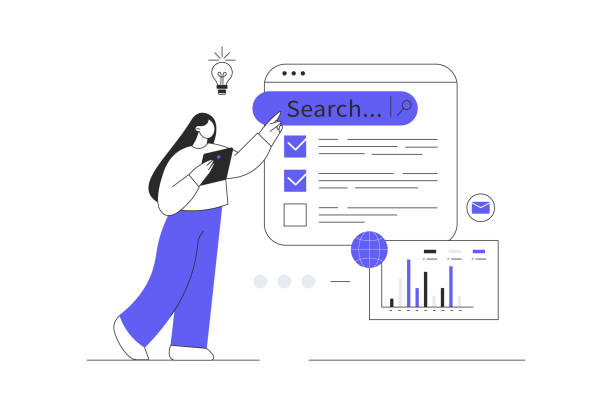
Content is king, but kingly content must be accessible and engaging to shine in user-friendly website design and make its impact.
#ContentQuality, #Readability, and #Accessibility are three main pillars for attracting and retaining audiences and converting them into loyal customers.
Your content should not only provide useful, accurate, and valuable information but also be written and formatted in a way that is easy and enjoyable to read, even for those with limited time or on the go.
This section offers an entertaining yet informative explanation of these aspects and their importance in a successful website.
To enhance readability, the use of short paragraphs, clear and descriptive headings and subheadings, and bullet points is recommended to organize information in an easily digestible and visually structured way.
Font size should be appropriate, and there should be sufficient color contrast between the text and background to prevent eye strain and ensure the text is easily readable.
Smart use of Whitespace also helps improve readability.
Furthermore, integrating high-quality images, infographic graphics, and engaging videos can make content more attractive and convey complex information in a more visual and understandable way, which in turn increases user retention time on the site.
Another important aspect is accessibility, which holds a special place in modern user-friendly website design.
A truly user-friendly website design is one that is usable by everyone, regardless of their abilities, disabilities, or the technologies they use.
This includes using #AltText for images for blind users who use screen readers, subtitles for videos for the hearing impaired, and full keyboard navigation capability for users who do not use a mouse.
These measures not only make your website more ethical and inclusive but also help expand your audience reach and increase the potential for attracting new customers.
Good and accessible content is the cornerstone of a successful website that attracts users, encourages them to return, and ultimately contributes significantly to business growth.
Website Loading Speed and Its Impact on User Satisfaction
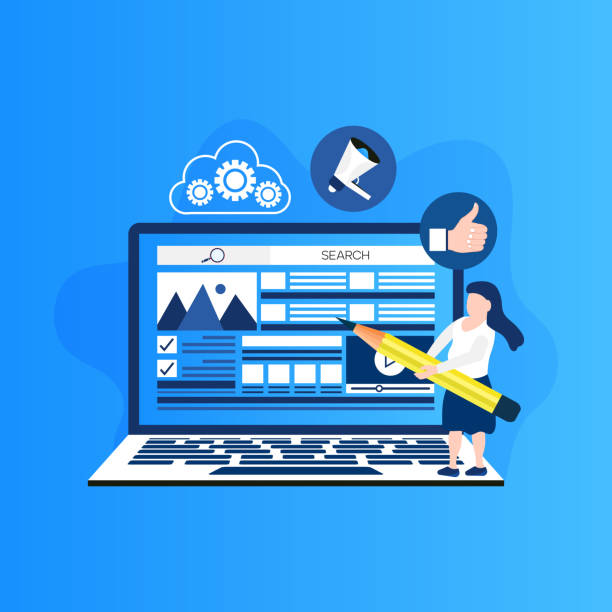
In the information age where everything moves at the speed of light, website loading speed has become a critical and indispensable factor in user-friendly website design.
#Today’sUsers have very high expectations for speed, and even a few seconds’ delay in loading a page can lead to #SiteAbandonment (Bounce) and consequently, the loss of a potential customer.
Credible news reports and research have shown that most users expect a website to load completely in less than 2-3 seconds, and if it doesn’t, they quickly move to a competitor’s website.
This chapter provides an in-depth analysis of the negative consequences of slow website speed and solutions for improving it.
Loading delays not only negatively affect user experience but can also seriously harm your site’s SEO ranking.
Google and other search engines consider site speed as one of the important and influential factors in page ranking.
Slower websites rank lower in search results, which means less organic traffic and reduced online visibility.
This reduction in traffic means lost sales opportunities and revenue.
Several factors can affect website loading speed, including image size and optimization (often the main cause of slowness), the use of unoptimized and bulky JavaScript and CSS codes, website hosting quality and capacity, and the number of HTTP requests the browser sends to fully load a page.
To improve speed, it is recommended to compress and optimize images (using modern formats like WebP), use a CDN (Content Delivery Network) to deliver content faster to users worldwide, minify and combine CSS and JS files to reduce size and number of requests, and definitely use a strong and reliable host.
Content caching can also help speed up page loading for subsequent user visits.
Ultimately, fast loading speed not only increases user satisfaction and keeps them on the site but also directly impacts your business success, as happier users become more loyal customers.
User-friendly website design will be incomplete and inefficient without considering loading speed.
Responsive Design and Compatibility with Various Devices Table

With the increasing use of #Mobile, #Tablet, and other types of devices for internet access, #ResponsiveDesign has become an undeniable necessity in user-friendly website design.
One can no longer assume that users access your website only via desktop computers; in fact, in many industries, mobile traffic has surpassed desktop traffic.
Responsive design means that your website should automatically and intelligently adapt to the screen size of the user’s device (computer, laptop, tablet, smartphone) and provide the best viewing and interaction experience regardless of screen dimensions.
This chapter is a specialized and comprehensive guide to implementing this critical approach in the web design process.
A non-responsive website will be difficult to use on small devices (such as mobile phones).
Users are forced to zoom or scroll around to read text, view images, or click buttons, which is a very unpleasant and frustrating experience that quickly leads to site abandonment and an increased bounce rate.
Furthermore, Google also considers responsive design as one of its mobile ranking factors, and websites not optimized for mobile receive lower scores in mobile search results.
To better understand the importance of this topic and its differences across various devices, examine the table below.
| Feature | Responsive Design | Non-Responsive Design |
|---|---|---|
| Display on various devices | Adapts automatically and dynamically to screen size, flexible | Fixed, requires manual zoom and scrolling, poor user experience |
| User Experience | Optimized, smooth, and consistent on every device (mobile, tablet, desktop) | Very poor experience, especially on mobile and tablet |
| Effect on SEO and Ranking | Positive, improves Google’s score, Mobile-Friendly | Negative, can severely reduce mobile SEO ranking |
| Development and Maintenance Cost | Might be slightly higher initially, but cost-effective in the long run | Lower initially, but requires separate versions or redesign in the long run |
Responsive design is not only essential for user satisfaction and increased conversion rates but also a smart investment for your digital future and business sustainability.
This is an important factor in user-friendly website design that should never be overlooked, as it encompasses a large portion of your users.
Usability Testing and Feedback Collection

Even the best #WebDesigners and #Developers cannot foresee and design all aspects of #UserExperience from the outset.
This is where usability testing and #FeedbackCollection play a vital role in the continuous refinement and optimization of user-friendly website design.
This process allows us to uncover hidden weaknesses, ambiguities, and obstacles on the website and implement necessary improvements based on real data and user behavior.
This chapter provides a practical educational and contains thought-provoking content on how to measure the effectiveness of your design and create a continuous improvement cycle.
Do you truly know how your users interact with your site?
Usability Testing involves observing real users as they interact with a website to see how they use it, where they encounter difficulties, what confuses them, and whether they can easily complete their tasks.
These tests can be conducted in person (by directly observing the user and asking questions) or remotely (using screen recording tools and audio feedback) and provide valuable data about actual behavior, pain points, and user expectations.
Complementary methods such as #Heatmaps to see high-click areas and #SessionRecordings to replay user interactions can also reveal user interaction patterns and navigation paths.
In addition to usability testing, collecting feedback through surveys, feedback forms, online chat, and even direct and in-depth conversations with users is also crucial.
Designing open-ended questions and encouraging users to freely express their opinions, suggestions, and criticisms can help uncover unknown Pain Points and provide creative and innovative suggestions for improvement.
Thought-provoking content in this area might include: “Do your assumptions about your site’s usability match the reality of user behavior?” Answering these questions through testing and feedback ensures that your user-friendly website design is continuously evolving and improving, always meeting the changing needs of users.
This is an iterative and continuous process and should be performed regularly so that your website always remains at the peak of efficiency and user satisfaction and surpasses its competitors.
Does your current e-commerce website design not generate the expected sales for you?
Rasawb specializes in professional e-commerce website design!
✅ An attractive and user-friendly site aimed at increasing sales
✅ High speed and security for an ideal shopping experience⚡ Get a free online store design consultation with Rasawb!
The Role of User-Friendly Website Design in SEO and Sales Growth
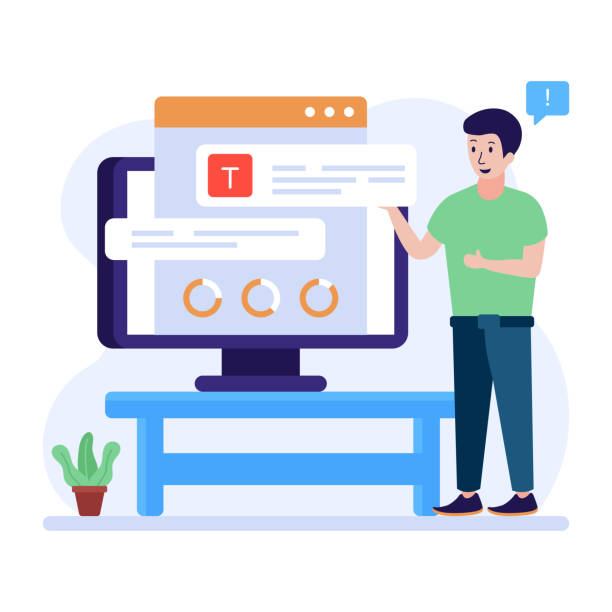
It might not seem so at first, but user-friendly website design is inextricably linked with #SEO (Search Engine Optimization) and #SalesGrowth.
This connection creates a powerful synergy that can lead to significant success for your online business.
A user-friendly website not only satisfies and delights users but also sends strong positive signals to search engines, leading to better rankings in search results and ultimately increased organic traffic and sales.
This chapter provides a detailed analysis and comprehensive explanation of these vital connections, showing how investing in UX can yield high returns in SEO and sales.
Search engines like Google look for websites that offer the best and most valuable experience to their users.
Therefore, factors such as website loading speed, #ResponsiveDesign and Mobile-Friendly, #ClearNavigationStructure, and high-quality, relevant, and readable content, all of which are fundamental principles of user-friendly website design, directly influence SEO ranking.
When users can easily navigate your site, find their desired content, enjoy it, and quickly access information, they spend more time on the site, the bounce rate decreases, and the conversion rate (such as purchases or registrations) increases.
These signals indicate to Google that your website is credible, useful, and provides real value to users, thus deserving higher rankings in search results.
Similarly, increased user satisfaction directly leads to increased sales and revenue.
When the process of purchasing, registering, or completing forms is easy, clear, and hassle-free, users are more likely to finalize their purchase or perform the desired actions.
User trust also increases through a transparent, secure, and professional design.
In fact, user-friendly website design is not just an investment in improving customer experience, but a powerful and long-term strategy for business growth and increased profitability.
Ignoring this aspect can lead to the loss of valuable traffic, loyal customers, and ultimately a significant reduction in revenue.
Therefore, website design should be considered a cornerstone for SEO and sales.
The Future of User-Friendly Design: Emerging Trends
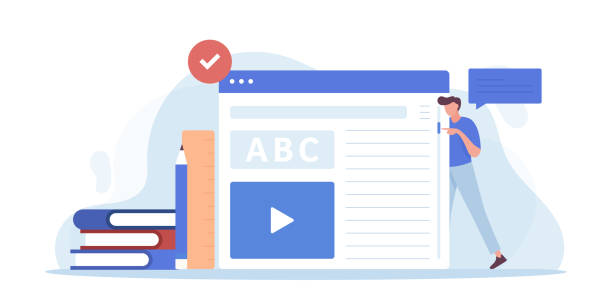
The world of the web is constantly evolving and progressing, and with it, the concept of #UserFriendlyWebsiteDesign also evolves to meet new needs and emerging technologies.
New trends are emerging that will shape the future of user experience, and understanding them is essential for every designer, developer, and business owner seeking success and longevity in the online space.
This chapter presents exciting news and entertaining content about upcoming technologies and approaches in web design that are set to revolutionize the landscape of our digital interactions.
One of the most important emerging trends is Artificial Intelligence (AI) and Machine Learning (ML) in design.
AI can help with unparalleled personalization of the user experience based on individual behavior, preferences, location, and even emotional states; from suggesting relevant products and services to dynamically arranging content for each user.
AI-powered chatbots are also improving and can provide instant support, answer complex questions, and guide users more efficiently and humanely.
These technologies are capable of elevating the user experience to a level beyond what we know today.
Augmented Reality (AR) and Virtual Reality (VR) also hold great potential for the future of user-friendly website design, especially in areas such as #OnlineStores (where customers can view products in their actual space before purchase) and #VirtualTours (for viewing properties or tourist locations).
Voice experience through voice assistants and voice search is also expanding, and websites need to be optimized for these screenless interactions as well.
Also, #ZeroUI or #ConversationalDesign, which focuses on natural, intuitive, and conversational interactions, is gaining popularity and moving towards eliminating the need for clicks and typing.
These trends indicate that user-friendly website design is moving towards more intuitive, personalized, more accessible for all, and more immersive experiences.
Designers must constantly update their knowledge, learn new technologies, and be ready to embrace these changes to build websites that not only meet today’s needs but also have a voice in tomorrow’s digital world and remain competitive.
Frequently Asked Questions
And other advertising services of Rasa Web Advertising Agency
- Smart Custom Software: A professional solution for customer behavior analysis focusing on custom programming.
- Smart Customer Journey Map: A blend of creativity and technology for analyzing customer behavior through user experience customization.
- Smart Website Development: An innovative service for enhancing campaign management through user experience customization.
- Smart Digital Branding: A quick and efficient solution for increasing sales by focusing on key page optimization.
- Smart Digital Advertising: Revolutionize digital branding with the help of SEO-driven content strategy.
And over hundreds of other services in internet advertising, advertising consultation, and organizational solutions
Internet Advertising | Advertising Strategy | Advertorial
Sources
The Importance of User Experience Design in Website Success
How Website Design Affects Your Business
Complete Guide to Responsive Design for Websites
Increasing Website Usability: Tips and Tricks
? For your business’s growth and visibility in the online space, Rasawb Afarin Digital Marketing Agency is by your side, offering comprehensive and specialized services. Among our services is corporate website design in accordance with the latest world standards.
📍 Tehran, Mirdamad Street, next to the Central Bank, Kazeroon Jonubi Alley, Ramin Alley No. 6


